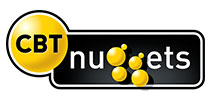در حال حاضر محصولی در سبد خرید شما وجود ندارد.

This intermediate SEC504 training prepares learners to detect and respond to threats that your company will inevitably face in the digital realm, deploying a dynamic response according to the attack.
It's a cliche to claim that the best defense is a strong offense, but in the case of digital security it's a cliche that's as true as it's ever been. One of the most fundamental skills a security administrator can gain is an understanding of the tools that hostile actors use to penetrate networks and extract valuable information.
در این روش نیاز به افزودن محصول به سبد خرید و تکمیل اطلاعات نیست و شما پس از وارد کردن ایمیل خود و طی کردن مراحل پرداخت لینک های دریافت محصولات را در ایمیل خود دریافت خواهید کرد.

✨ تا ۷۰% تخفیف با شارژ کیف پول 🎁
مشاهده پلن ها